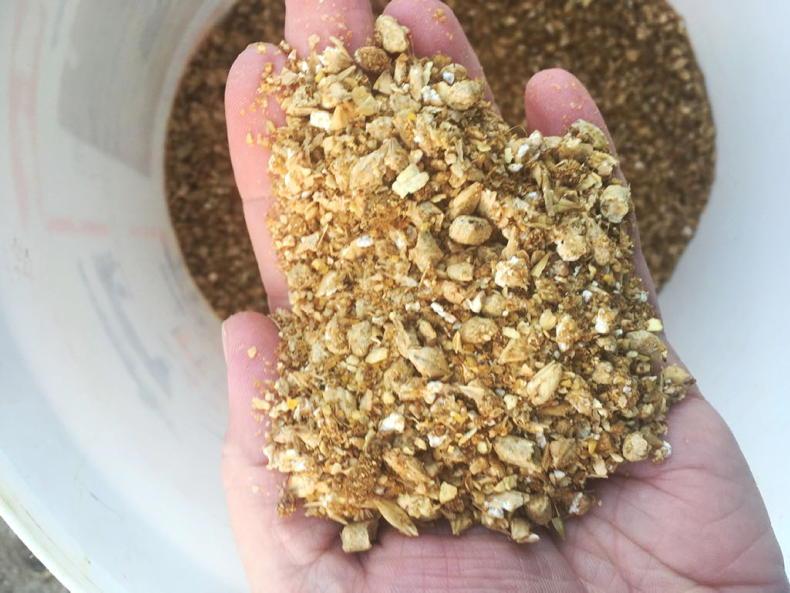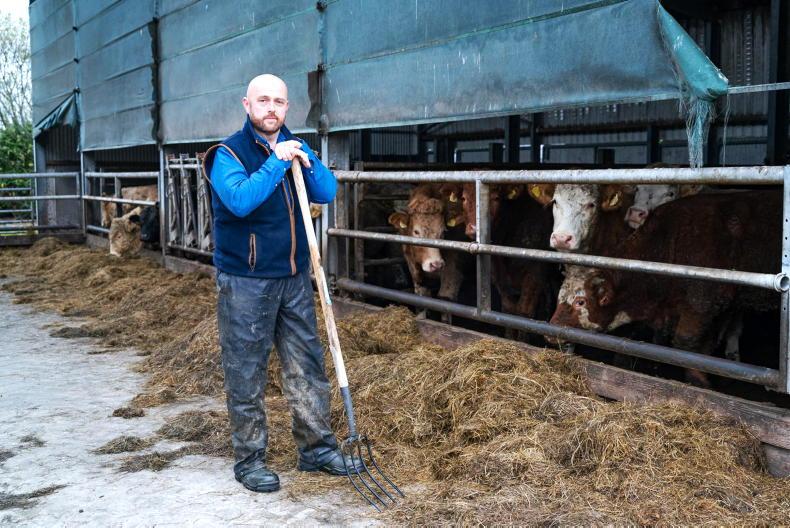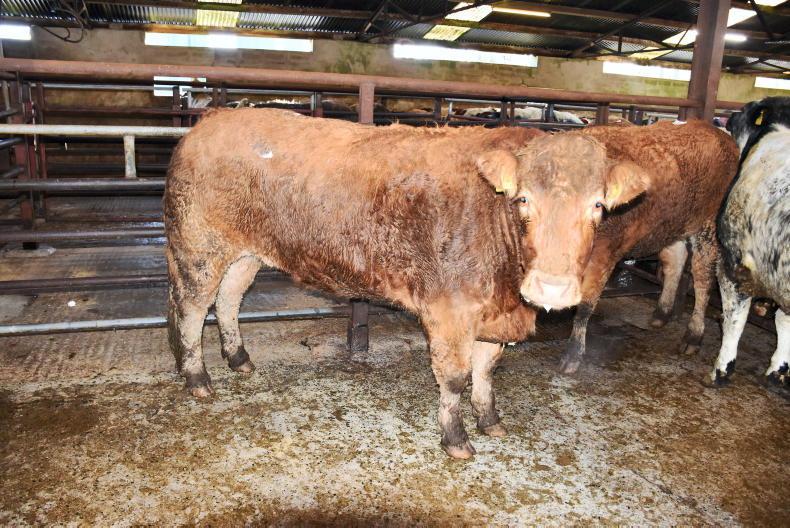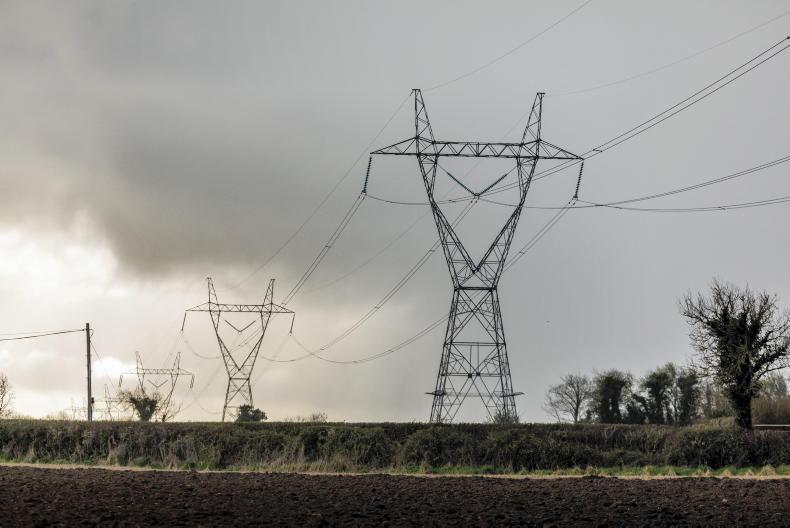Improved fertility in Owen and James Martin’s dairy herd is allowing cows to respond efficiently to high levels of concentrate feeding.
The Martin family manage 160 Holstein Friesian cows in a fully housed, all year-round calving system in Dromintee, Co Armagh.
Benchmarking figures compiled by Dairylink Ireland adviser Aidan Cushnahan show that the herd averaged 9,196l/cow from 3.5t of concentrates/cow last year.
This equates to an average feed rate of 0.39kg/l, which is not as good as the Northern Ireland benchmarking average of 0.33kg/l. This is typical of high-input systems, but the benchmarking figures show that the Martin’s system still delivered financially last year.
The margin over concentrate (MOC) benchmark, which is effectively milk cheque minus meal bill, stood at £1,616/cow and was better than the benchmarking average of £1,540/cow. This indicates that the extra concentrates that were fed to cows delivered in terms of milk output.
Fertility in the high-input, high output herd is the main driver of this. It allowed cows to respond efficiently to concentrates, as there are more freshly-calved cows and fewer stale cows going through the parlour.
“Our calving index has improved in recent years and was 390 days last year. I probably wouldn’t want it coming back much more, because cows would have too much milk at drying off,” James said.
The other factor was the targeted use of concentrates, as the herd is split in two groups for total mixed ration (TMR) feeding and parlour nuts are fed in a feed-to-yield system using EID tags.
A third factor that allowed a better performance with the financial benchmark (MOC) rather than the physical one (feed rate), is that the Martins buy in straights, mainly caustic wheat, and this could have a led to a financial saving in feed costs.
Marginal litres
Dairylink adviser Aidan Cushnahan explained that the above average MOC shows that the Martins gained by chasing “marginal litres” last year. This is the additional milk output that comes from feeding extra concentrates and is a concept used in high-input dairy units.
For example, a cow yielding 30l from 10kg of meal has a feed rate of 0.30kg/l. If an extra 2kg is fed, then the yield response will not be 0.30kg/l, but will be a marginal feed rate, probably around 1kg/l.
“If you are feeding cows for marginal litres, then you have to make sure that the response in yield is making you more money than the extra feed cost,” Aidan said.
“To use round numbers, if milk is 25p/l and meal is costing 25p/kg (£250/t), there is no point continuing to feed an extra 4kg for marginal litres if the yield response was only three more litres,” he said.
Aside from economics, other factors to be considered before feeding extra concentrates include potential impacts on forage intakes, fertility and cow health, including issues such as acidosis.
Finances
A breakdown of the main farm working expenses for the Martin farm is outlined in Figure 1. Machinery costs are higher and contractor costs are lower than most Dairylink farms, as Owen and James carry out slurry, silage and fertiliser work themselves.
Total working expenses for the 2019 year came to £302,480 (20.7 ppl), while total receipts for the business (excluding Basic Payment) amounted to £439,226.
Assuming a personal drawings allowance of £30,000, as with all Dairylink farms, then there was £106,746 available for loan repayments, additional drawings, capital expenditure and tax.
What’s next?
The high level of milk output on the Martin farm is achieved by twice-a day-milking, unlike some similar dairying systems where cows are milked three times or more a day.
James feels that the herd has the potential to produce more milk and a higher annual yield is expected in 2020. This stems from production being constrained in the first quarter of 2019, due to the quality of second-cut that was being fed at the time.
“Analysis of monthly MOC results would appear to confirm this, as the rolling average milk yield for end of February 2020 was 9,545l/cow/year,” Aidan said.
Owen and James plan to increase output of litres and solids, through a combination of increases in herd size, yield per cow and improvements in milk components. Proposed targets for 2020 are:
Herd size - 168 cows.Milk yield - 9,500l/cow/year.Milk solids - 692kg/cow/year.Feed rate - 0.4 kg/l.They plan to continue focusing on maximising the nutrient value of grass silage produced on the farm. All areas allocated for first-cut silage received slurry and inorganic fertiliser by the end of March. This was based on a nutrient management plan drawn up in conjunction with Aidan and CAFRE Environmental Adviser Brian Finch. The plan is to start cutting grass in early to mid-May, weather and ground conditions permitting.
Read more
Meal bill savings made in Antrim
Dairylink Ireland: improving feed efficiency in Down
Improved fertility in Owen and James Martin’s dairy herd is allowing cows to respond efficiently to high levels of concentrate feeding.
The Martin family manage 160 Holstein Friesian cows in a fully housed, all year-round calving system in Dromintee, Co Armagh.
Benchmarking figures compiled by Dairylink Ireland adviser Aidan Cushnahan show that the herd averaged 9,196l/cow from 3.5t of concentrates/cow last year.
This equates to an average feed rate of 0.39kg/l, which is not as good as the Northern Ireland benchmarking average of 0.33kg/l. This is typical of high-input systems, but the benchmarking figures show that the Martin’s system still delivered financially last year.
The margin over concentrate (MOC) benchmark, which is effectively milk cheque minus meal bill, stood at £1,616/cow and was better than the benchmarking average of £1,540/cow. This indicates that the extra concentrates that were fed to cows delivered in terms of milk output.
Fertility in the high-input, high output herd is the main driver of this. It allowed cows to respond efficiently to concentrates, as there are more freshly-calved cows and fewer stale cows going through the parlour.
“Our calving index has improved in recent years and was 390 days last year. I probably wouldn’t want it coming back much more, because cows would have too much milk at drying off,” James said.
The other factor was the targeted use of concentrates, as the herd is split in two groups for total mixed ration (TMR) feeding and parlour nuts are fed in a feed-to-yield system using EID tags.
A third factor that allowed a better performance with the financial benchmark (MOC) rather than the physical one (feed rate), is that the Martins buy in straights, mainly caustic wheat, and this could have a led to a financial saving in feed costs.
Marginal litres
Dairylink adviser Aidan Cushnahan explained that the above average MOC shows that the Martins gained by chasing “marginal litres” last year. This is the additional milk output that comes from feeding extra concentrates and is a concept used in high-input dairy units.
For example, a cow yielding 30l from 10kg of meal has a feed rate of 0.30kg/l. If an extra 2kg is fed, then the yield response will not be 0.30kg/l, but will be a marginal feed rate, probably around 1kg/l.
“If you are feeding cows for marginal litres, then you have to make sure that the response in yield is making you more money than the extra feed cost,” Aidan said.
“To use round numbers, if milk is 25p/l and meal is costing 25p/kg (£250/t), there is no point continuing to feed an extra 4kg for marginal litres if the yield response was only three more litres,” he said.
Aside from economics, other factors to be considered before feeding extra concentrates include potential impacts on forage intakes, fertility and cow health, including issues such as acidosis.
Finances
A breakdown of the main farm working expenses for the Martin farm is outlined in Figure 1. Machinery costs are higher and contractor costs are lower than most Dairylink farms, as Owen and James carry out slurry, silage and fertiliser work themselves.
Total working expenses for the 2019 year came to £302,480 (20.7 ppl), while total receipts for the business (excluding Basic Payment) amounted to £439,226.
Assuming a personal drawings allowance of £30,000, as with all Dairylink farms, then there was £106,746 available for loan repayments, additional drawings, capital expenditure and tax.
What’s next?
The high level of milk output on the Martin farm is achieved by twice-a day-milking, unlike some similar dairying systems where cows are milked three times or more a day.
James feels that the herd has the potential to produce more milk and a higher annual yield is expected in 2020. This stems from production being constrained in the first quarter of 2019, due to the quality of second-cut that was being fed at the time.
“Analysis of monthly MOC results would appear to confirm this, as the rolling average milk yield for end of February 2020 was 9,545l/cow/year,” Aidan said.
Owen and James plan to increase output of litres and solids, through a combination of increases in herd size, yield per cow and improvements in milk components. Proposed targets for 2020 are:
Herd size - 168 cows.Milk yield - 9,500l/cow/year.Milk solids - 692kg/cow/year.Feed rate - 0.4 kg/l.They plan to continue focusing on maximising the nutrient value of grass silage produced on the farm. All areas allocated for first-cut silage received slurry and inorganic fertiliser by the end of March. This was based on a nutrient management plan drawn up in conjunction with Aidan and CAFRE Environmental Adviser Brian Finch. The plan is to start cutting grass in early to mid-May, weather and ground conditions permitting.
Read more
Meal bill savings made in Antrim
Dairylink Ireland: improving feed efficiency in Down










SHARING OPTIONS